As the joint Russian‐Belarusian military exercise known as Zapad-2025 came to a close on September 16, NATO’s eastern members remain on high alert. The war games, the first of their kind since Russia’s full‐scale invasion of Ukraine in 2022, have become a fresh focal point for Western concerns about Russian military posture, escalation risks, and alliance readiness. Western observers are using Zapad-2025 not just to assess Russian capabilities, but to test NATO’s political will, response thresholds, and border defence mechanisms.
What Happened: Key Facts About Zapad-2025.
- Dates and scale: Zapad-2025 was held from September 12 to September 16. Belarus claims that approximately 13,000 troops took part. This is a significantly smaller number compared to Zapad-2021, which involved some ~200,000 personnel.
- Location and scope: The drills were spread across Belarus and in parts of Russia, including in the Baltic and Barents seas. Key sites included central training areas in Belarus (e.g. near Barysaw), Kaliningrad, and areas close to NATO borders. Some manoeuvres were held deeper within Belarus, a move Minsk said was intended to reduce tension.
- Activities: The exercises included the use of unmanned aerial vehicles (UAVs or drones), ground robotic systems, electronic warfare, naval manoeuvres, and a notable display of cruise missile launches over the Barents Sea. Nuclear‐capable bombers were also involved.
- Observers: Despite earlier uncertainty, observers from 23 states attended; three NATO member states (the U.S., Türkiye, and Hungary) had observers, as did representatives from OSCE under the Vienna Document framework. Some foreign military‐diplomatic attendees visited, even though certain segments (e.g. naval operations, drills near Gozha and in Kaliningrad) remained restricted.
Reactions Along The Eastern Flank And NATO’s Countermeasures:
- Border concerns & airspace violations: In parallel with Zapad, NATO has seen a spike in drone activity. Poland reported at least ~20 Russian drones entering its airspace over the night of September 9‐10. Romania also scrambled jets after drone incursions. These incidents intensified concerns among Alliance members that these were probing actions, testing response time rather than full‐scale attacks.
- Operation Eastern Sentry: In response, NATO launched Operation Eastern Sentry on September 12. The aim is to bolster air, sea, and ground defences along the eastern flank, especially over Poland, the Baltic, and other border zones. It signals a shift from passive monitoring to integrated, alliance‐wide readiness. Air assets from several countries, Denmark, France, the UK, and Germany, are involved.
- Border closures and heightened alertness: Poland temporarily closed border crossings with Belarus. Lithuania and Latvia partially closed sections of their airspace. Governments in these countries described the period as especially tense, possibly the most significant since the outbreak of the war in Ukraine, in terms of proximity and risk.
Analysis: What Observers Are Watching & What It Might Signal.
Readiness vs. Capacity
One key question is how ready the Russian military is, three years into its war against Ukraine, especially given losses of men, matériel, and logistical strain. While the scale of Zapad-2025 was much smaller than Zapad-2021, the complexity of the exercises (e.g. use of complex systems like electronic warfare, drones, cruise missiles) suggests emphasis on modernising tactics rather than simply massing troops.
Analysts caution, however, that declared numbers may underrepresent actual force positioning. Parallel operations with Collective Security Treaty Organisation (CSTO) allies, or dispersed deployments across multiple districts (Moscow, Leningrad, Baltic, etc.) could mask cumulative capabilities.
New Norms Of Escalation & Risk:
The drone incursions are illustrative of what some experts call “grey-zone” or hybrid provocations, incidents falling short of overt war but enough to test adversary reactions. Observers will be watching:
- How quickly does NATO respond when airspace is violated
- Whether Russia uses electronic warfare to degrade detection/attribution
- If infrastructure sabotage, information operations or cyber attacks accompany or follow the drills
Such actions elevate risk: what might start as a misstep could be interpreted as an attack. The proximity of some drill elements to NATO borders (Kaliningrad, near Poland/Lithuania, around the Suwałki Gap) increases the chance for incidents.
Political Signalling & Deterrent Messaging:
From the Russian/Belarus side, Zapad-2025 serves several signalling purposes:
- Demonstrating continued military cooperation between Moscow and Minsk, including on strategic assets
- Reassuring domestic and CSTO allies of readiness in light of the war’s costs
- Reinforcing claims that NATO is the adversary / provocative force near Russian borders
From NATO’s side, responses like Eastern Sentry, increased border patrols, diplomatic protests, and allied flyovers are meant to demonstrate unity, deterrence, and willingness to respond without crossing into direct conflict.
Latest Developments: After Zapad.
- Conclusion of the drills: On September 17, Russia announced that Zapad-2025 ended, with participants returning to their base locations.
- Foreign participation: More than 100 “military-diplomatic corps” representatives, foreign guests from 55 countries (including observers and some contingent participants), were reported to have followed the active phases.
- Ongoing vigilance: Despite the exercise’s end, NATO and eastern member states warn that risks remain. Poland says its border with Belarus will remain closed until conditions are judged safe. Drone activity continues to be monitored.
- UK involvement: The UK has officially joined the NATO response mission (Eastern Sentry), sending RAF Typhoon jets to assist in air defence over Poland. Diplomatically, London has summoned the Russian ambassador over the recent airspace infringements, calling them “unprecedented and provocative.”
What It Means: Implications & Forward Options.
- Allied readiness must adapt: NATO’s eastern border countries are increasingly under pressure to improve rapid detection, attribution, and response capabilities, especially for unmanned systems, hybrid threats, and electronic warfare. Shared surveillance, joint rules of engagement and clearer thresholds for action will become more critical.
- Deterrence via clarity: Ambiguity benefits the provocateur. For deterrence to be credible, NATO must be able to respond predictably to certain provocations (e.g., airspace violations), even if it intends to avoid wider escalation.
- Potential flashpoints: Key geographic zones like the Suwałki Gap will continue to be densely observed. Incidents near Kaliningrad, Belarus‐Lithuania/Poland borderlands (Grodna, Gozha, etc.) carry outsized risk for misunderstanding or miscalculation.
- Diplomacy must accompany deterrence: In order to prevent misinterpretation, transparent communication via diplomatic channels, observer invitations, and verifiable notifications are essential. Russia and Belarus’ claims (e.g. lower troop numbers, defensive intent) will be countered by NATO’s intelligence and surveillance. But mismatches in narrative add risk.
- Broader geopolitical effects: The militarisation of borders, increasing investment in air defences, and normalisation of “grey zone” incidents contribute to a more tense Europe. In particular, tensions with Ukraine are inseparable from those among NATO neighbours; what is tolerated or ignored in Ukraine can migrate into NATO territory.
Expert Commentary:
- Dr. Ryhor Astapenia, Belarus Initiative (Chatham House)
“Beyond their military value, these drills are also used by Russia to intimidate the West … In 2025, circumstances are once again different. Although relations between Lukashenka and Putin are harmonious, the two leaders have diverging interests and are therefore likely to want to send very different signals to the West.”
He argues that Zapad-2025 is as much about political signalling, especially Belarus asserting its role with Moscow, as about military readiness. Also notes that the size of the Russian contingent this time is much smaller than in past drills.
- Vasil Navumau & Kirill Shamiev, European Council on Foreign Relations (ECFR)
“Zapad 2025 is not only a show of force; it is Lukashenko’s bid to play a role in the emergent European security order as it bargains with Washington over sanctions and prisoners.”
They caution that many capabilities displayed in past drills, drones, unmanned systems, etc., often underperformed when actually used in Ukraine, so displays can overstate battlefield effectiveness.
- Lt. Gen. Lance Landrum (Ret.) (Centre for European Policy Analysis, CEPA)
“Zapad 2025 may turn out to be a carefully choreographed show of strength, or it may reveal the limits of Russia’s capabilities. It will, however, provide crucial signals about not only Moscow’s military readiness, but also the evolving geopolitical alignments shaping Eurasia.”
- Analyst Rygor Nizhnikov (Finnish Institute of International Affairs)
“At present, Moscow is in no position to deploy to Belarus the tens of thousands of troops needed to pose a genuine threat to NATO’s eastern flank … The idea that one day Russia could use ‘Zapad’ drills to strike NATO’s eastern flank does deserve attention, especially if it manages to achieve its objectives in Ukraine and free up military resources. But not this time.”
- Konrad Muzyka, Rochan Consulting (Poland)
“One scenario is that Russia doesn’t really have the time to do a proper Zapad exercise this year, with most of its forces engaged in Ukraine.”
He also warns that reduced visibility, less public information, and shifting of ranges (moving some activity deeper inside Belarus) may be attempts to obscure what is actually happening.
Comparison: Zapad-2021 vs. Zapad-2025.
| Characteristic | Zapad-2021 | Zapad-2025 |
| Date & Context | Held in September 2021, pre-full-scale invasion of Ukraine. | September 12-16, 2025, during the ongoing war in Ukraine, first such major exercise since the 2022 invasion. |
| Troop Numbers / Scale | ~200,000 personnel claimed/participated. | Official claims about 13,000 participants; some analysts expect larger cumulative numbers, including parallel operations. |
| Declared vs. Actual | Certain underreporting, especially of support, equipment, and force mobilisation, large pre-positioning of forces in Belarus led to the Ukraine invasion. | Similarly, declared numbers may not reflect all units involved; satellite/intelligence analysts note parallel CSTO exercises and other readiness drills. |
| Geographic Proximity to NATO Borders | Parts of Belarus, areas close to the Suwałki Gap, a set of infrastructure that could be used for offensive operations toward Ukraine and potentially NATO’s eastern flank. | Some activities deeper inside Belarus claimed, with a conscious move to shift ranges inward; still, key ranges near Poland and Lithuania were used; rehearsal of assets near borders remains a concern. |
| Capabilities Displayed | Broad mix of ground, air, and naval operations; emphasis on mobilisation, rapid troop movement; use of unmanned systems (drones, robotics), but effectiveness was mixed in combat. | More emphasis on advanced strike systems (e.g. Oreshnik missile), hypersonics, electronic warfare, and nuclear-capable systems drills. Less on sheer mass; more on capability integration. |
| Visibility / Political Signalling | Heavy visibility; Zapad-2021 widely perceived as a rehearsal or precursor to invasion. Served as a warning, domestically and internationally. | More nuanced signalling: reduced personnel, inward shifts, more “transparency” via observers, but strong messaging via nuclear drills, advanced weapons deployment, showing resilience. Also serving Belarus’s diplomatic aims. |
| Risk of Escalation / Strategic Concern | High concerns: Many analysts believed the logistics, positioning, and timing of 2021 drills were directly preparatory or enabling factors for the invasion of Ukraine. | While analysts see a lower immediate risk of an equivalent offensive toward NATO, the drills are seen as testing paths for future operations, probing NATO’s response, reinforcing deterrence narratives, and possibly used to mask force movements. The nuclear component adds a layer of strategic risk. |
Conclusion:
Zapad-2025 may have ended, but its implications linger well beyond the training grounds of Belarus and Kaliningrad. On paper, the exercise looked smaller, more contained, and even “transparent” with invited NATO observers. Yet the choreography tells a different story: nuclear-capable missile drills, drone incursions into NATO airspace, and simulated strikes over the Barents Sea are not signs of restraint but of calculated ambiguity.
Zapad-2025 has demonstrated that despite severe attrition in its campaign in Ukraine, and notwithstanding statements about “defensive” intent, Russia, together with Belarus, continues to view large-scale, complex drills near NATO borders as a key tool: both to practice its military capabilities and to test how NATO reacts. For NATO’s eastern flank, the message is clear: readiness is no longer just about preparedness for overt invasion, but also resilience to ambiguity, drone incursions, cyber attacks, and disinformation. The next challenge will be sustaining vigilance in peacetime, ensuring that alliance responses remain credible, and avoiding escalation even in the face of deliberately provocative signals.
For NATO, the lesson is uncomfortable. The Kremlin does not need to mobilise 200,000 troops, as it did in 2021, to send a strategic warning. Instead, it can rely on hybrid intrusions, drones crossing Polish and Romanian skies, cyber probes, or electronic jamming, to test the alliance’s reflexes without crossing the Article 5 threshold. Every violation forces NATO to choose between escalation and hesitation, a dilemma that Moscow seems eager to exploit.
Belarus’s role also demands closer scrutiny. Far from a passive host, Minsk is positioning itself as both Russia’s accomplice and a bargaining actor with the West. Allowing Russian nuclear-capable systems on its soil while simultaneously claiming to “scale down” drills suggests a dual game: dependence on Moscow for survival, yet attempts to soften its international isolation. Whether Belarus is a co-architect or merely a staging ground for Russia’s strategy remains a critical question for NATO intelligence.
The real investigative thread runs back to Zapad-2021. Then, NATO underestimated the long-term significance of Russian pre-positioning in Belarus, forces that months later rolled across Ukraine’s borders. Today, the same pattern is emerging in subtler form: smaller numbers, but more advanced capabilities and hybrid tools integrated into the drills. The reduced troop count could reflect not weakness but adaptation, an army learning to mask its movements under the cover of “defensive” exercises.
Ultimately, Zapad-2025 is less about immediate invasion and more about shaping the psychological battlefield. It is about normalising airspace violations, testing NATO’s tolerance for risk, and signalling that Russia, even bloodied by three years of war in Ukraine, still claims escalation dominance on Europe’s eastern flank. The danger is not only miscalculation but complacency: that Western capitals interpret the exercise as scaled-down theatre, when in fact it may be rehearsing the very scenarios, nuclear intimidation, hybrid destabilisation, probing attacks, that could define the next phase of confrontation between Russia and NATO.
The question that remains unanswered is whether NATO is prepared to treat these drills as merely another performance in Moscow’s long tradition of strategic theatre, or as the opening act of a far more dangerous play.
Advertisements
Tags:







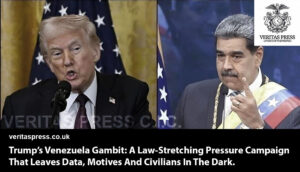
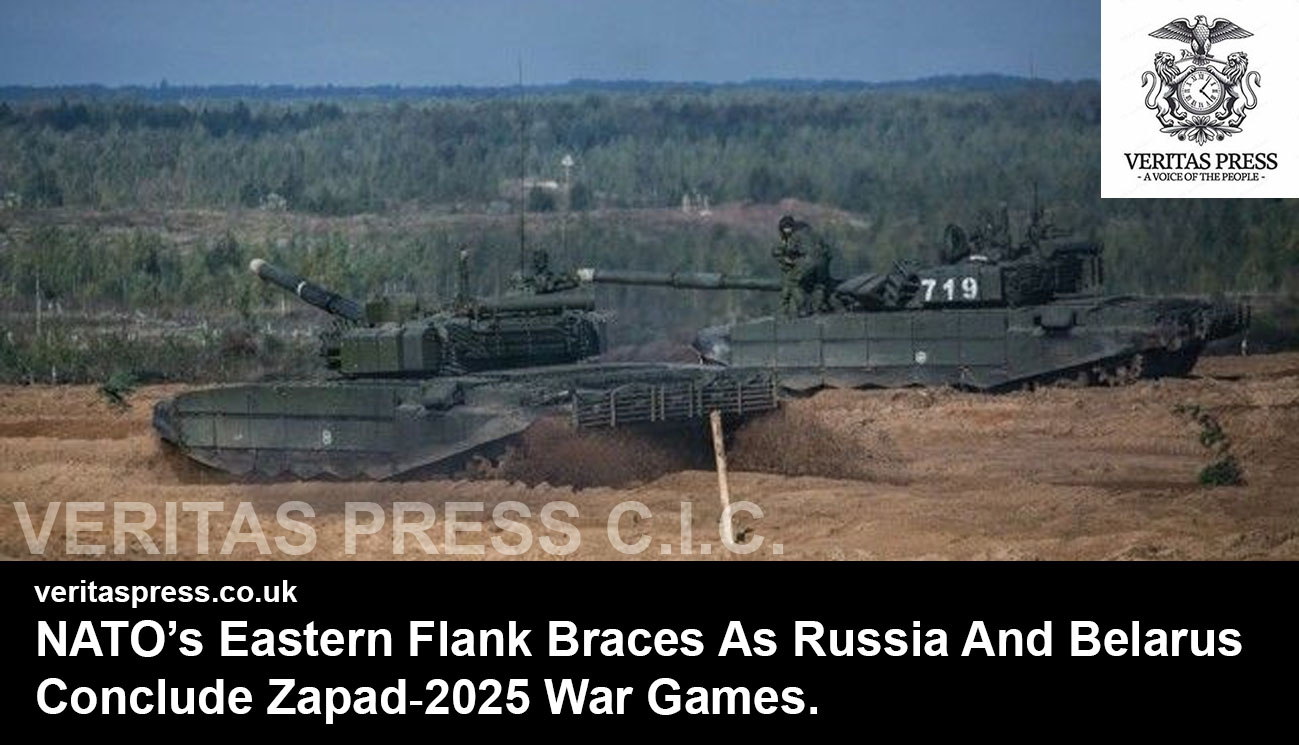





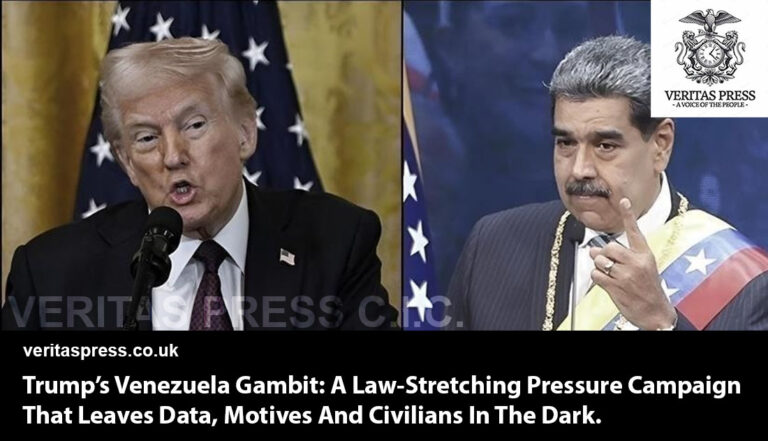



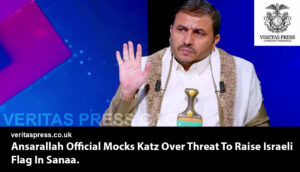
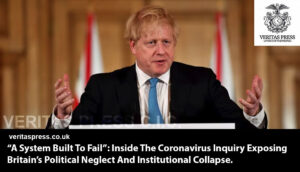










Leave a Reply